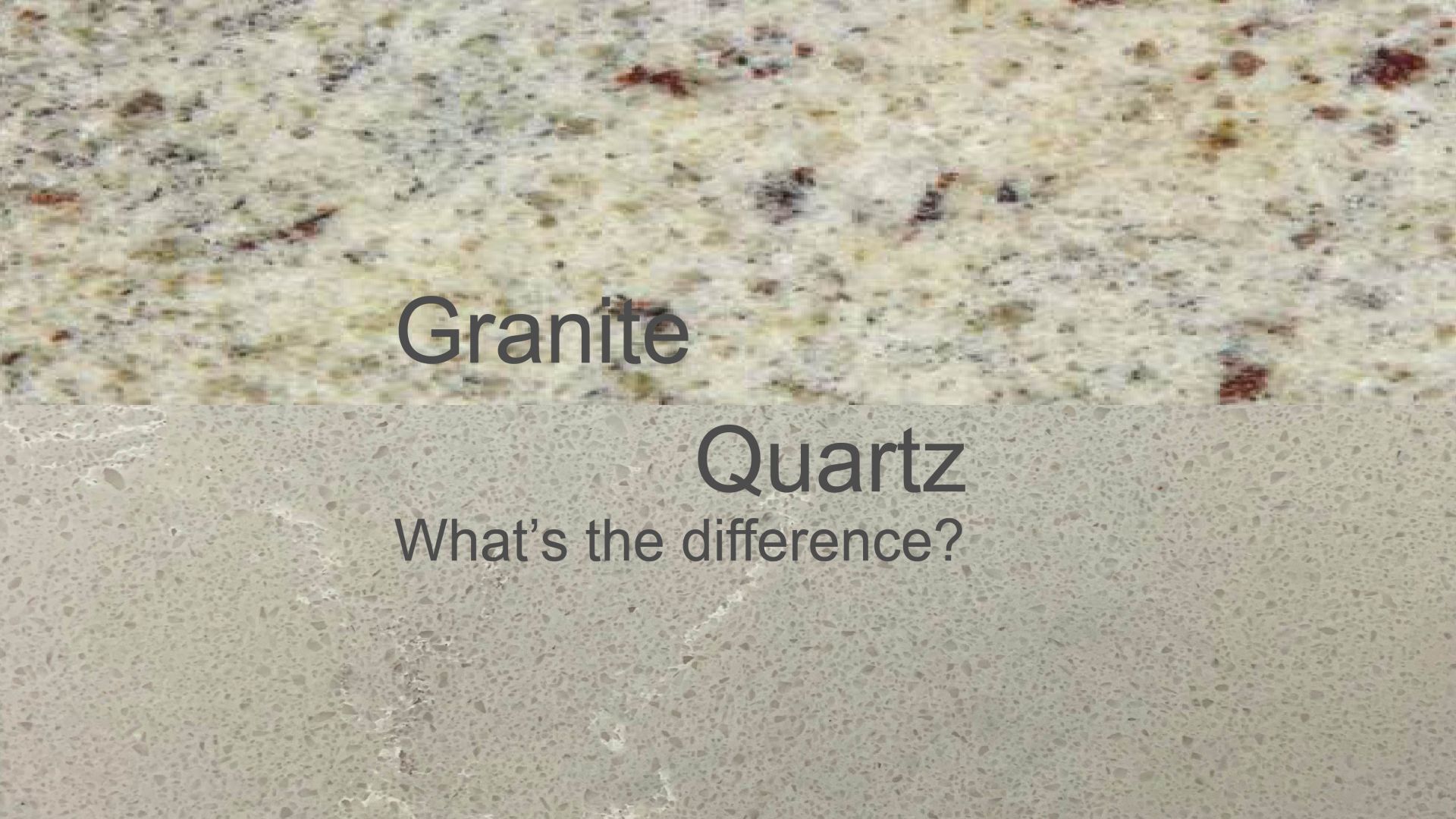Finance Available
5 Day Turnaround
Template
Fabrication
Installation
Blog

Quartz vs Granite?
What's the difference between granite and quartz?
One of the most common questions our customers ask us is 'What is the difference between granite and quartz?'. It is pretty important to understand these differences as this can oftentimes sway them in the decision making process. So lets break it down.
Granite is a completely natural material. It can be found all over the world and is quarried in large blocks which is then sliced (as you would a slice of bread). These 2cm or 3cm slices are then face polished to a mirror finish. It's this final process that produces the beautifully unique patterns notorious with granite worktops. Granite slabs are generally bigger in size as opposed to their quartz counterparts. Slabs can often be found to be as long as 3.4m by 2.2m high. Although it is worth checking on the available sizes for the granite you want before going ahead and ordering the biggest island your kitchen can fit.
Quartz on the other hand, is made up of roughly 90 to 95% natural quartz particles with the remaining percentage made up of resins and dyes. By adjusting the size of the quartz fragments and the dye colours, slab manufacturers are able to create literally thousands of different colours and styles of slabs, although most quartz brands will only really have a range of 20 to 50 colours to choose from (as if there isn't enough to choose from already). Once these slabs are poured into their 'moulds', they are then pressed, heated and polished to give the quartz it's mirror finished polish. As a minimum standard, quartz slabs can start at 3m by 1.4m but the majority of colours now offer 3.2m by 1.6m slabs.
Pro's and Con's
It is safe to say that both these products are extremely strong and durable, however, there are several things you need to know when it comes to the use and maintenance of these surfaces.
Granite is a natural material and is therefore susceptible to natural flaws and fissures. Where some granite slabs can maintain uniformity throughout their slabs, some more exotic slabs with heavier patterns will appear to have some very stand-out crystals, shifts in patterns or veins that may only appear in one or two parts of the slab. This should be seen as part of the unique character and beauty of the material instead of a mistake in the slab. If you wish to reduce the risk of finding one of these in your worksurfaces you can always request an image of your slab, or better yet visit the fabricator or slab supplier to view the slab in person.
Quartz will not have these marks as they are generally formed as part of a strenuous manufacturing process to maintain conformity from slab to slab. Quartz is usually seen as a more superior product in terms of durability but this does not mean it is indestructible. For example, in rare cases, catching the edge of a worktop with something heavy like a crock pot may cause chipping (this will also happen to granite). Also, due to the resin content in Quartz worktops, it is known that extreme heat can cause blistering of the surface i.e. a boiling hot pan taken from a hob directly to the surface. Where granite is seen to be more heat resistant, it is never recommended to test this theory as thermal shock (extreme cold to extreme heat) may result in similar damaged surfaces. Use pan trivets where necessary.
There is one process in the maintenance of Granite worktops that is worth noting. As part of a yearly routine, it is recommended that Granite worktops are sealed with a stone sealer to reduce the risk of watermarks and staining. Especially in the lighter colours, granite is naturally slightly porous and therefore more susceptible to staining. Using a product like Lithofin Stain-Stop once a year will help maintain the beauty of the worktops.
Cost
In terms of price, it can be difficult to differentiate Granite to Quartz, but on average Quartz is usually more expensive. Within the quartz category you can find a number of different brands that also offer various price points. 'Silestone' is a high-end brand and market leader but there are a number of other brands that offer slightly more cost effective colours. You will also find some Granite colours cheaper than Quartz but customers who choose granite will opt for the higher priced materials as this is where you can often find the more beautiful and unique slabs.
Again, it can be difficult to put a budget cost on your kitchen worktops as it would not be uncommon to see a medium sized kitchen vary from £1500 right up to £6000+ depending on the choice of colour (and this can be in both Granite and Quartz).
Where can they be used?
Granite can pretty much be used in any application. Kitchen countertops, outdoor kitchen/bbq areas, floor and wall cladding both indoor and outdoor, fireplaces, bathrooms, bars, pretty much anywhere it can be fixed safely.
Quartz can generally only be used indoors for kitchen countertops, wall/floor applications, bathroom vanities and fireplaces (except for where log burners are fitted as these can be too hot). Quartz does not work well under UV from outdoor use and the surface will tend to degrade from over-exposure.
So what should I chose?
This will come entirely down to personal preference. Both of these products have their own unique attributes. In terms of durability, there is very little between the 2 and it's safe to say they are both far superior to alternatives such as laminate, acrylic and wood surfaces. That's why when people choose between Granite and Quartz, they will generally pick which one looks best for the project they have in mind.
Get a Free Quote
Quotation Form
Thank you for your enquiry.